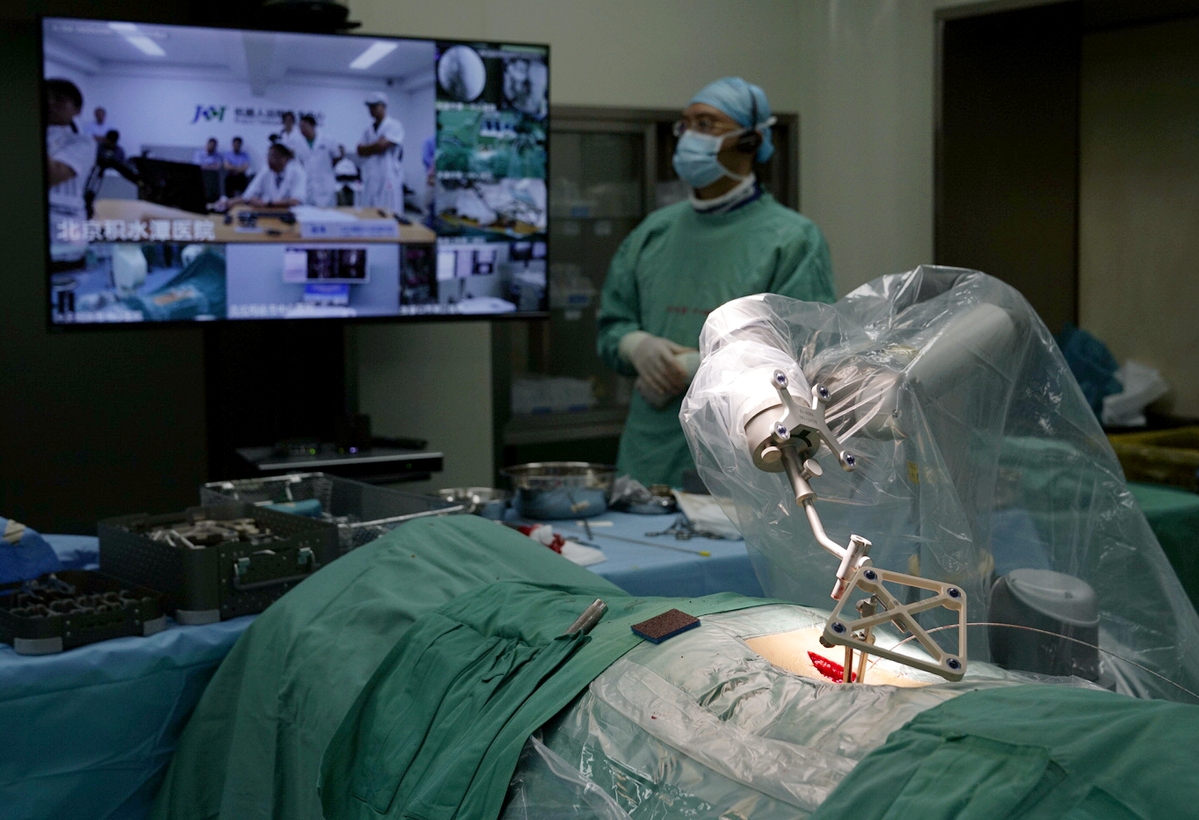Ericsson on 5G use cases: remote surgery, augmented and virtual reality with AI agent all depend on 3GPP URLLC specs
5G for Remote Surgery:
This year, surgeons in Florida working with Ericsson, were able to operate on remote patients in Dubai and Shanghai, using 5G technology, according to Mischa Dohler, Ericsson vice president-emerging technologies.
A hospital in China used a 5G-enabled robot to perform spinal surgery on patients, and doctors used VR headsets to livestream the operation. The robot implanted over 62 pedicle screws in the patients’ spinal cord. Here’s a pic of that:

Photo by Wang Fei/For China Daily
Dohler said he’s working with the White House, FCC, NTIA, Food and Drug Administration and others to make remote surgery “a reality.” More widespread use of the technology won’t happen unless smaller carriers also get involved. We will have not only humans using your networks, but also machines more and more,” Dohler added.
Gartner’s market research underscores the importance of 5G SA, predicting that by 2025, it will be the foundation for the majority of applications demanding sub-10 millisecond latency. This transition is not merely a technical upgrade but a strategic enabler for industries poised to benefit from real-time data processing and decision-making. However, the ultra low latency depends on two 3GPP Release 16 specs – 1.] 5GNR enhancements for URLLC in the RAN and 2.]URLLC in the 5G SA core network– being completed, performance tested and implemented. That has not happened yet and without it there can’t be any 5G URLLC use cases like remote surgery!
Real-time remote surgeries, once a concept of futuristic medicine, are becoming a reality. The ability to perform surgical procedures from thousands of miles away, with real-time response and precision, could revolutionize healthcare accessibility and outcomes. For example, a pilot project involving 5G SA-enabled remote surgery successfully demonstrated how surgeons could operate with millisecond-level precision, mitigating geographical barriers to specialized medical care.
……………………………………………………………………………………………………………….
Ericsson’s Dohler predicted growing use of augmented and virtual reality and AI “agents,” computer programs capable of performing tasks autonomously, which people will use as part of their daily lives. New technology will require networks that can handle increased traffic, he said. New data traffic patterns “will hit you at some point this decade,” he said. “You will need to do some bold moves.”
………………………………………………………………………………………………………..
References:
https://www.ericsson.com/en/blog/2024/3/cutting-the-cord-lifesaving-telesurgery-in-the-age-of-5g
https://www.chinadaily.com.cn/a/201908/29/WS5d670e17a310cf3e355686fa.html
https://www.linkedin.com/pulse/dawn-new-era-navigating-shift-from-5g-nsa-sa-tayroni-fkvre/
One thought on “Ericsson on 5G use cases: remote surgery, augmented and virtual reality with AI agent all depend on 3GPP URLLC specs”
Comments are closed.



Ericsson has laid off 240 employees in China, part of a restructuring in the country that will affect one of its largest research hubs globally. Ericsson said the positions would be cut in line with the company’s effort to diversify its research and development footprint to better align with its sales globally. The employees impacted would be in its core network R&D division in China, a spokesman said.
The Swedish telecommunications-equipment company told employees at an internal meeting in early March that it was embarking on a transformation of its China operations that would continue into 2025, several people who attended the meeting told The Wall Street Journal. The company has plans to reduce headcount further in the coming months, people familiar with the company said. One of the people said the R&D team recently had been excluded from working on at least two large projects in the U.S. and Australia.
Ericsson’s market share has been dwindling in China in the 5G era amid intensified competition from local players like Huawei and heightened geopolitical tensions. In its 2023 annual report, Ericsson cautioned that a further escalation of trade tensions between the U.S. and China could hurt its operations in China.
Ericsson had 9,950 employees in China last year, down from 13,783 in 2019, according to company data.
https://www.wsj.com/tech/ericsson-lays-off-more-than-200-employees-in-china-f4ab7db3